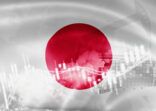Last month, the new NISA,or Nippon Individual Savings Account, started, and there were JPY1.3trn ($8.7bn) net inflows to open-end funds, more than four times larger than the previous month and the largest recorded since December 2021.
The driving force was the world equity category, which recorded JPY1.16trn of net inflows on its own. Morningstar assumes that a large amount of money from growth investment quota flowed into the category. However, Japan equity also doubled its net inflows from December, though the amount was JPY130bn, one ninth of world equity.
Allocation funds turned to JPY50bn net inflows from net outflows in the previous month. So, they might have been modestly affected by the new NISA launch, Morningstar reasons.
In Japan equity, passive funds did not turn to net outflows despite the stock market rise, which might have prompted for profit-taking; also, large-cap and mid/small-cap funds increased their net inflows. The total net inflows to the category were JPY130bn – exceeding JPY100n for the first time in three months. At the individual fund level, high-dividend stock funds were among the bestselling funds.
However, both Japan and world, active and passive funds continued to have net outflows. But, the level of net outflows was modestly improved mainly from Japan REITs. In the Japan REIT subcategory, both active and passive halved their net outflows from the previous month.
On the other hand, allocation subcategories mainly sold through sales channels such as tactical asset-allocation, and risk control, and “other” funds remained in net outflows.
“So, it is worth paying attention to whether the total recovery continues,” Morningstar concluded.

















